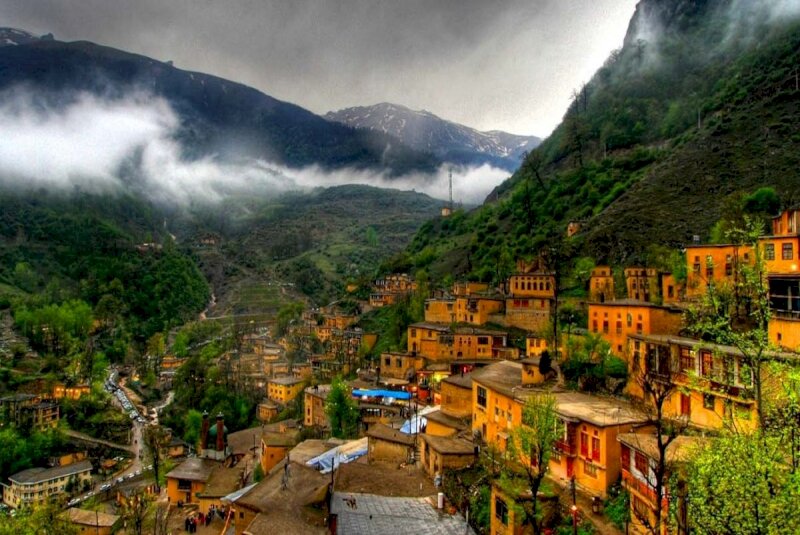Masouleh, Yazd, Shushtar selected as Iran ‘paragon cities’

TEHRAN – The stairs village of Masouleh and the cities of Yazd and Shushtar have been named Iran’s “paragon cities” by the international magazine of 2A (Architecture & Art), CHTN reported on Tuesday.
Choosing these cities was due to the way each of them combines design, public space, sustainability, social justice, transportation, and other aspects of city life in order to create a space that willfully addresses every aspect of city life, the report added.
The result and fruit of living in a “Paragon City” are helping its citizens to become more peaceful, less stressed, and, as a result, avoid dissipation of their creative energy, allowing them to live in a more positive, kinder, more loving, and more innovative way, the official website of the magazine has announced.
In such ideal cities, all members of society of all ages can grow and live harmoniously and peacefully.
Paragon city is a major, modern city, one that combines the past with energy and liveliness. Urban design is the way cities are fashioned to best unite the local populations with their surroundings.
Masouleh, the most beautiful stairs village in Iran
The stairs village of Masouleh where roofs and streets become one is located in the middle of green mountains of Gilan, northern Iran. Stairway with a specific architecture, the houses of the village are built on each other and the roof of each house is the courtyard of his upper Neighbor.
Masouleh is estimated to date for a millennium, as the existence of numerous graveyards inner and outside of the village proves its old age.
The combination of such architecture with natural landscapes can be a national and international touristy center and the only way of the inhabitants’ living. As all people could directly see the main facade of houses, the local artists and artisans did their best in this part of the building.
According to the Lonely Planet, local and foreign tourists swarm like ants across the village's rooftops and through its narrow passageways during summer.
Yazd, city of wind-catchers
In July 2017, the historical structure of the city of Yazd was named a UNESCO World Heritage. Wedged between the northern Dasht-e Kavir and the southern Dasht-e Lut on a flat plain, the oasis city enjoys a very harmonious public-religious architecture that dates from different eras.
Yazd is usually referred to as a delightful place to stay, or a “don't miss” destination by almost all of its visitors.
Water is brought to the city by the qanat system. Each district of the city is built on a qanat and has a communal center. The concept of Persian Qanat was registered on the UNESCO World Heritage list in 2016 as they provide exceptional testimony to cultural traditions and civilizations in desert areas with an arid climate.
The use of earth in buildings includes walls and roofs by the construction of vaults and domes. Houses are built with courtyards below ground level, serving underground areas. Wind-catchers, courtyards, and thick earthen walls create a pleasant microclimate.
Partially covered alleyways together with streets, public squares and courtyards contribute to a pleasant urban quality. The city escaped the modernization trends that destroyed many traditional earthen cities.
It survives today with its traditional districts, the qanat system, traditional houses, bazaars, hammams, water cisterns, mosques, synagogues, Zoroastrian temples, and the historic garden of Dolat-Abad. The city enjoys the peaceful coexistence of three religions: Islam, Judaism, and Zoroastrianism.
Shushtar, home to numerous historical sites
Situated in southwest Iran, Shushtar is home to numerous sites dating from prehistorical times onwards.
The town is also famed for being home to the UNESCO-registered Shushtar Historical Hydraulic System, known as a “masterpiece of creative genius”. The ensemble comprises bridges, weirs, tunnels, canals, and a series of ancient watermills powered by human-made waterfalls. It is named after an ancient city of the same name with its history dating back to the time of Darius the Great, the Achaemenid king.
Inscribed on the UNESCO World Heritage list in 2009, the Shushtar Historical Hydraulic System may testify to the heritage and the synthesis of earlier Elamite and Mesopotamian knowhow. According to UNESCO, the ensemble was probably influenced by the Petra dam and tunnel and by Roman civil engineering.
ABU/AFM
